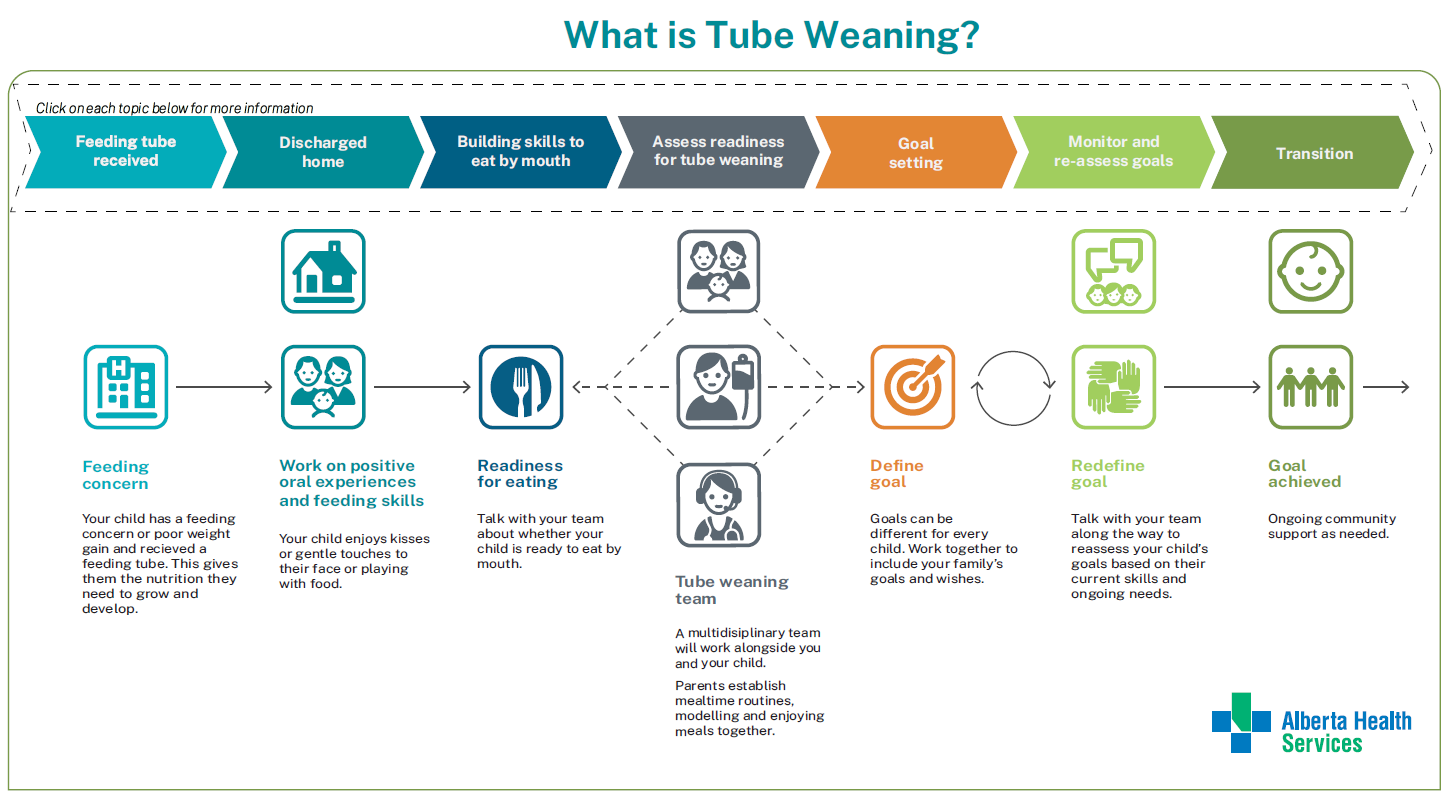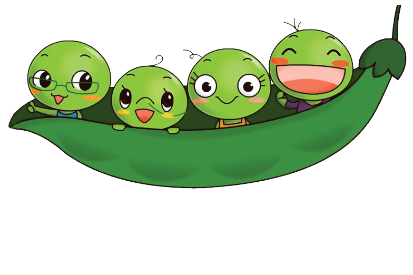Tube weaning is the process of moving from tube feeds to eating by mouth. This can bring up a lot of feelings. Having the right tools and support can help to make the journey smoother. Your team will work alongside you and guide you through each step. The approach to tube weaning and the time it takes can vary depending on the needs of your child and your family.

Source:
Tube Weaning Pathway
Tube weaning is the process of moving from tube feeds to eating by mouth. This can bring up a lot of feelings. Having the right tools and support can help to make the journey smoother.
Your healthcare team needs to understand who you are and what matters to you and your child. This helps to build trust. But it can be hard to know what to share or what to say.
Try starting by asking yourself:
- “What are the things in our life that are important to me and my child?”
- “What are the things in our life that may be affecting our health and well-being?”
Tube weaning is a team effort between you, your child, and your healthcare team. You know your child’s needs, while your team has the knowledge in feeding, nutrition, and tube weaning. Working together, you’ll have a better experience and better results.
Your healthcare team will adjust the plan to fit your family’s needs and goals, making sure they understand what matters to you and how to best support you.
The approach and time it takes for tube weaning will depend on your child’s specific needs.
Having a feeding tube is not a sign of failure of feeding your child orally. Your child has received a feeding tube to help them get the nutrition they need to grow and develop.
Children need a feeding tube for a variety of reasons. For children who have a tube, mealtimes may look and feel different.
For more information on how to support healthy growth for your child (ages one and up), talk to your child's care team.
If your child has had many medical treatments including an NG-tube, they might not like things near their face. They might turn their head away, keep their mouth closed and/or cry around mealtimes or tooth brushing.
To help them get used to things by their face, make it fun. This can include giving gentle kisses, letting them get messy with food using their hands or utensils, and bringing toys to their mouth.
Chat with your team about whether your child is ready to start moving towards oral eating.
Are you and your child ready to eat by mouth? Consider the following:
- Is my child healthy?
- Can my child safely swallow?
- Is there anything that I need to be aware of that can impact my child’s eating?
- Is my child interested in food?
- Can my child get messy and play with food?
- What skills does my child need to support eating by mouth?
- Might lick food with their tongue?
- Watch you eating or try to feed you their food?
- Comfortable touching food or having food near their mouth?
Ask your team for more information.
Chat with your team about whether your child is ready to start tube weaning. Your team members may complete a checklist to assess readiness to tube wean.
Are you and your child ready to tube wean? Consider the following:
- Does my child have any upcoming surgeries or medical interventions?
- Do we have the time and energy to participate actively in appointments and tube wean?
- Have we been working on mealtime routines with our child?
- Is my child interested in food?
- Has my child been gaining weight and growing well?
- Will school or child care be able to support feeding during tube wean?
- Child & Family: Parents can help by providing a relaxed, pleasant atmosphere during meals to create positive associations with food. Parents establish mealtime routines, modeling and enjoying meals together whether feeding by tube or by mouth. Parents work with and ask for help from the care team.
- Occupational Therapist: Supports participation in (and readiness for) eating, feeding, and swallowing. Assesses skills, positioning, equipment (e.g., utensils, highchairs) and strategies to develop skills and make mealtime routines easier.
- Registered Dietitian: Monitors growth and helps to meet nutrition needs.
- Speech Therapist: Assesses, diagnoses and treats eating, feeding, and swallowing difficulties. May suggest food modifications, such as offering specific textures or thickness of fluids.
- Family Physician/Pediatrician: Addresses any medical issues that may impact your child’s ability to eat and maintain proper nutrition. Supports coordination of care, investigation, and diagnosis medical, surgical and medication management.
- Peer Mentor: Provides support and understanding as they have experienced a similar situation. Answers questions based on their experience of having a child who is tube fed and going through the weaning process.
Click the link for further information: PEAS | Finding a Support Network.
Other team members may be involved: Nurses, social work, pharmacist, physiotherapist, therapy assistant, lactation consultants, psychology, or psychiatry.
Goals can be different for every child and be defined along the way. Some children will:
- Remain tube fed and may enjoy playing with or having small tastes of foods
- Eat and continue to get some nutrition through their tube
- Eat and drink by mouth and may use the tube when ill
- Eat and drink by mouth and have the tube removed
Each child is unique and will follow their own path. Your child may not be able to reach all the goals you have set together with your team. It may be time for you and your team to pause tube weaning and reassess the goals and treatment plan.
Talk with your team along the way to reassess your child’s goals based on their current skills and ongoing needs.
Depending on you and your child's goals, you may have weaned all nutrition and hydration from the tube, and are able to eat and drink by mouth.
Your team may then transition you to other community supports. The transition is to support you and your child with ongoing goals and to continue to support overall growth and development.
A complete list of eating, feeding and swallowing services across the province can be found here:
Find Services PEAS Alberta Health Services
Contact Information
- Alberta Children's Hospital: Pediatric Eating, Feeding & Swallowing - Outpatient Services
- Stollery Children's Hospital: Home Nutrition Support Program
